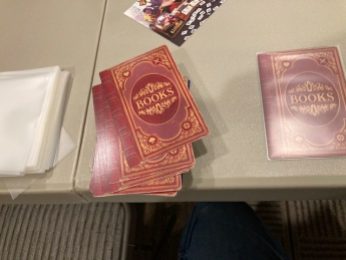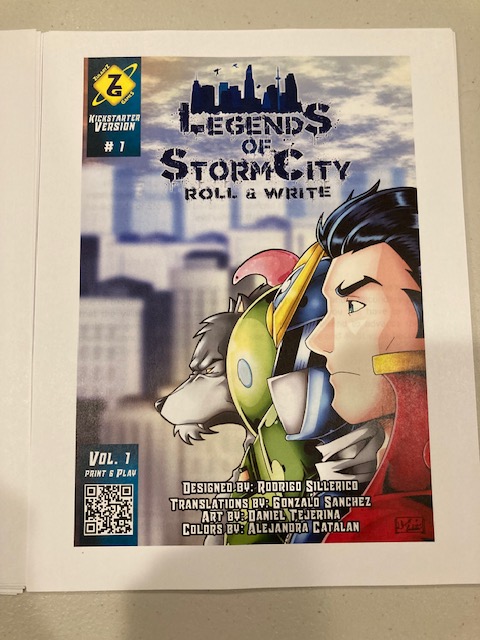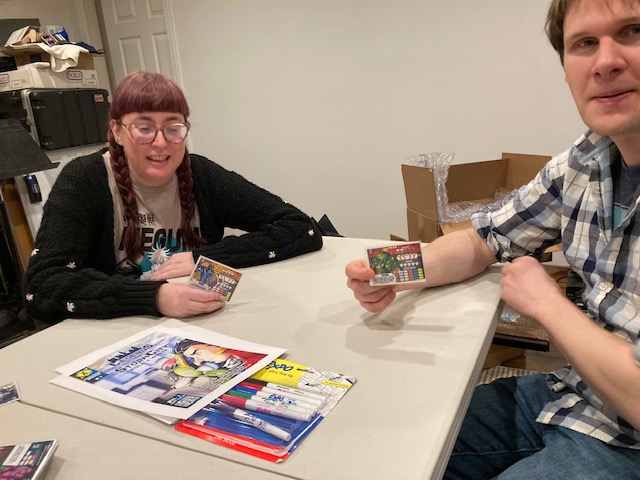
I don’t think I’ve played a murder mystery game in 8 years! The last time that I played was at a Murder Mystery Party hosted by Charlie and Allison sometime before the pandemic.

Recently, Sara was rooting through some of my new games and found Red Carpet in Ruins. She started looking at it, and said “Hey! We should play this!” I called Charlie and Allison right then and there. Although it took us a week to all agree on a date, we finally got a group of 8 together to play through Red Carpet in Ruins last night.
Murder Mystery

In case you’ve never seen a murder mystery game, someone is murdered (pretend, not for real) in a group involving 6 to 8 characters: your group has to work together to find said murderer!

Each of these characters (see above) has a motive to murder the victim! In Red Carpet In Ruins, we are role-playing characters from a 1959 Hollywood film set where the main actor has been murdered! The group must uncover the murderer! However, there is a catch: the murderer is in the group of folks, and he/she will do anything to cover up the murder! Over the course of a night (3 to 4 hours), each player role plays a single character, usually going as far to dress up!

Throughout the night, little books tell you where you were, when you were, how you were, and things that need to be revealed as you play. At some point, after everyone has revealed all the relevant plot points, accusations start flying! Everyone writes down who they think did it, and you reveal the final murderer!
Differences

Charlie and Allison have played a lot of these (according to them, all of the “How to Host a Murder Party” mysteries) and they pointed out a few differences in this game:
- Times are very well-defined: Inside the character books, players times are very well-established, so if you are ever asked about your whereabouts you can very clearly articulate your location
- Map and character standees are included: If you really want to note where people were, a map and standees are included—many murder party games don’t included this
- You know if you are the murderer right way: Some Murder mysteries don’t tell you that you are the killer (or not) until the final act—in this game, you know before you even come to party.
Charlie and Allison, the connoisseurs, liked all these new changes. Although we didn’t really use the map that much to show movements, we could have. And knowing you are the murderer lets you concoct better alibis.
Although, the murderer in our group confesses that it was very stressful knowing they were the murderer all night: they actually would have preferred not knowing (like some of the older games).
Preparations

Unlike most of the games in our Top 10 Cooperative Detective Games, there is an awful lot of preparation for a Murder Mystery Party! This isn’t a game you can just pull off the shelf and say “Hey! Let’s just play this now!”
You have to send out invitations early: people have to know when it is so they can prepare. Players have to prepare in multiple ways: they have to get costumes (although strictly speaking, you don’t need to wear costumes, it helps make the evening more fun), and they have to read about their character in their informational booklet. See below: each character gets an invitations and an informational booklet.

Also, it’s very important than everyone commits to coming: even the host doesn’t know who the murderer is, so the game can run aground if not all players show. This is why it’s so important to spend some time making sure everyone agrees on a date: the game will not work if everyone doesn’t show. (There are some mitigation strategies, but even those are limited because the info packet is needed to run a character: if the info packet is not there for a character, it’s unlikely the night can continue).
So that makes the Murder Mystery Party a little fragile: one player, by not bringing their info packet can completely derail the evening. Make sure everyone is committed.
Costumes

Costumes aren’t strictly necessary, but they really do throw you into the theme of the game.

My group didn’t go crazy, but we did just enough costuming to get us into the mood. It’s up to your group how much you want to get into it: we did just enough to make it fun for us.
Do whatever your group finds fun!
Gameplay

Gameplay proceeds in three rounds over a night. Each round is about an hour, and in that hour “pivotal plot points” need to be revealed: each character has many points (as described by their informational booklet) that need to be revealed: who they saw, what they heard, when they saw said things, and so on. Once everyone (except the killer) has revealed the important plot points, play proceeds to the next round.

We punctuated our rounds with dinner (between rounds 1 and 2) and dessert (between rounds 2 and 3): the game strongly encourages this ethic, and even provided suggestions of music and food on their web site! After the final round, accusations are made and everyone makes a guess as to the killer! And the final murderer is revealed!
One thing to point out: everyone has to tell the truth to the best of their abilities: this is how plot points gets revealed … except for the murderer: he/she is doing everything he/she can to lie and stop the truth from coming out!
Hard Core Board Gamer Thoughts

There is a weird thing I realized after playing last night: Murder Mystery games like Red Carpet in Ruins are Social Deduction games and Hidden Traitor games disguised as Detective games! The accusations I saw flying around last night reminded me of games of Coup or Avalon: people behave just like Social Deduction games! Finger pointing! Yelling! Accusations! And then, there’s the Hidden Traitor element where the murderer tries to lie and remain hidden! Just like Shadows over Camelot or Nemesis!
I point this out because, on the surface, Murder Mystery games “feel” like they should go into Top 10 Cooperative Detective Games. Nope nope nope nope nope. Although there are elements of sleuthing and detective-type deduction, Red Carpet in Ruins was much much more of a Social Deduction Game with some Hidden Traitor elements. The lack of detective game is even worse if you are the murderer: you don’t get to play the detective part of the game at all … you just become the Hidden Traitor and lie lie lie.
I realized after playing that I don’t like Social Deduction games and I don’t like Hidden Traitor games. The detective parts and engaging times with my friends kept this enjoyable, but I didn’t like the Murder Mystery genre nearly as much as I remember. Caveat Emptor: Murder Mystery Games are not nearly as much a Detective game as you might think.
Reusing The Game

You can reuse the game when you are done: the only “non-resuable” pieces are the invitations. You’ll notice I just made a copy of the invitations and that worked fine.
My wife’s co-worker wants to try this, so I reset the game: I put the Objects back in their envelopes (there are objects that are revealed as the game plays), gathered the info packets, and put everything back in the box. I will pass it on, and suggest she makes copies of the invitations so she can pass it on …
Conclusion

The fun part of Red Carpet in Ruins was spending 3-4 hours with my friends: we got to dress up, solve parts of a mystery, and be roleplay silly 1959 Hollywood stereotypes for a night. Do you enjoy being a bit of an extrovert and roleplaying with your friends? Then you will enjoy this … just be aware there is a lot of preparation. If, on the other hand, you are an introvert and don’t like the roleplaying, this may not be for you. And to be clear, Red Carpet in Ruins is more of Social Deduction game (with a Hidden Traitor) than a strict mystery game. If you are an introvert hoping to engage in just the detective part of the game, you may be sorely disappointed.
Me and all of my friends had a good time last night. Decide for yourself if this is something you’d like .. maybe I can pass it along to you!



























































































































































































